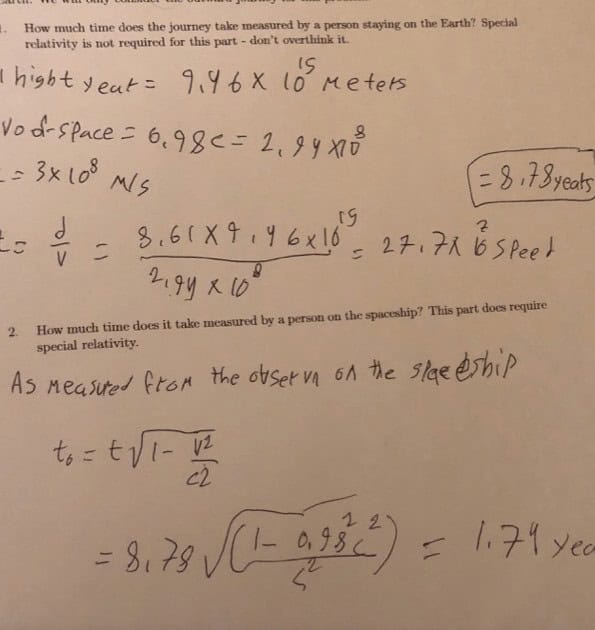Embarking on a trip to Mars is an incredibly intricate and potentially hazardous endeavor. Despite its seemingly straightforward nature, the achievement of conquering the Red Planet involves numerous intricacies and restrictions linked to the current state of space technology. However, the day is approaching when humans will have the incredible opportunity to explore the neighboring planet. Even though it may come with a hefty price tag, the lucky few will undoubtedly cherish the experience.
What is the distance between Earth and Mars in kilometers?
The distance between these two celestial bodies is constantly changing and is not a fixed value. This is because both Earth and Mars follow elliptical orbits around the Sun, and only during certain oppositions, which occur every few years, they reach their maximum distance from each other.
Orbit and Distance of Mars at Various Points
A regular opposition occurs when there is approximately 100 million kilometers of separation between Earth and the Red Planet. However, a grand opposition (GE) occurs when the distance between Earth and Mars is at its minimum. This phenomenon happens approximately every 15-17 years. During the grand opposition in 2018, Earth and Mars were only 57.77 million kilometers apart, whereas in 2003, the distance was a mere 55.8 million kilometers. This may not seem like much, considering that the maximum distance that can separate the two planets is 401 million kilometers.
The optimal time to launch a spacecraft to Mars is during the period of the grand opposition, which typically lasts for 2 to 3 months. In cases where urgent travel is required, it is advisable to wait for the regular opposition, which occurs approximately once every 780 days.
However, it is important to note that these calculations are based on ideal conditions and do not take into account the movement speeds of the planets. In reality, the trajectory from point A to point B cannot be a straight line due to various complexities.
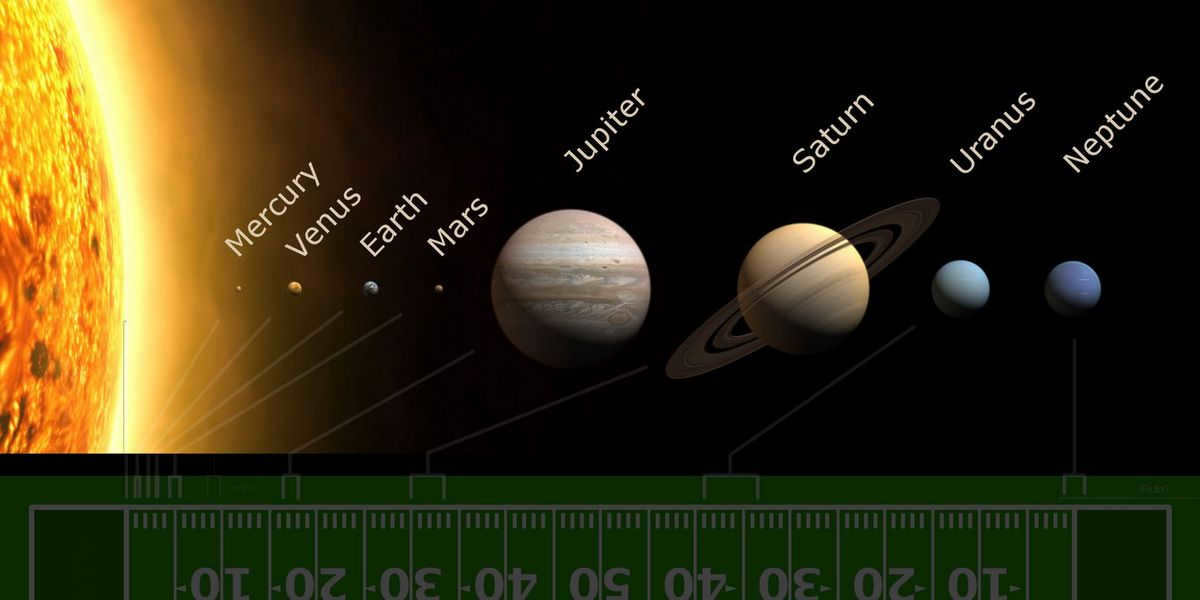
Orbital mechanics and the distance to cover
The elliptical paths of celestial bodies, the varying speeds of the Earth and Mars, the relatively slow velocity (in the context of space) of the rocket, and the finite fuel supply all indicate that the journey will be lengthy. It’s clear that a distance of 55-60 million kilometers is not feasible, and extensive planning is required for such a voyage.
Spoiler alert: considering the full range of human capabilities, the answer to the question “how far is it to Mars” amounts to a staggering 600 million kilometers.
To accurately determine the route from Earth to Mars, various factors need to be considered, including the distance between the two planets, the speed and mass of the rocket, the trajectory, and the position of other planets in the solar system.
In theory, the quickest spacecraft traveling along the most direct path to Mars would arrive in approximately 941 hours (40 days). However, taking into account the average distance between Earth and Mars, the estimated flight time for a rocket would be around 3,879 hours (162 days). In the event that the two planets are at their farthest point from each other, the journey would take approximately 289 days.
What is the complexity of calculating the trajectory?
The calculations for determining the trajectory must consider the constant movement of both planets around their axes and the Sun. Engineers need to determine the optimal positions of the two planets in order to launch the spacecraft so that it aligns with Mars at the designated time.
This is crucial because the duration of the flight affects the amount of fuel, oxygen, food, and other necessities required for any space journey.
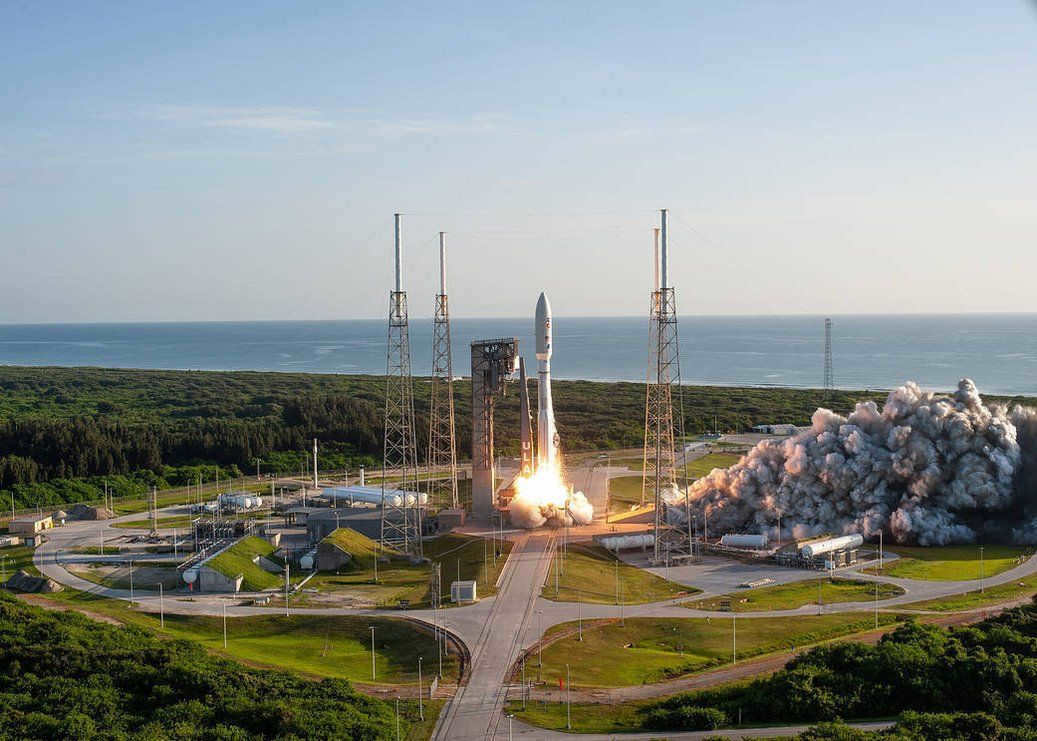
Estimations regarding the duration of the flight
According to Professor Craig C. Patten, it is feasible to travel from Earth to Mars within a span of 9 months, given a flawless launch. This implies that the rocket should be launched precisely when the orbits of the two planets align, a phenomenon that occurs every 26 months.
Why does it take so much time to travel by air?
Firstly, the process involves following a curved trajectory that takes into account the specific orbital positions of both Earth and Mars.
Secondly, the duration of the flight is heavily influenced by the relative positions of the two planets at the time of launch. This is why we often hear about the 26-month waiting period.
Lastly, the limitations of current space technology play a significant role. Overcoming Earth’s gravity and achieving orbit require the use of a powerful engine that consumes a substantial amount of fuel. Additionally, the engine’s operation time is relatively short, typically just a few minutes. Due to technical constraints, it is currently impossible to carry extra fuel for mid-flight acceleration.
How to reach Mars more quickly (flight paths)
It is not possible to travel to the Red Planet in a straight line (due to the influence of the Sun’s gravitational field), so a curved flight path is necessary. Scientists propose three options: elliptical, parabolic, and hyperbolic.
Elliptical (Goman) trajectory – achieving Mars with minimal fuel consumption
This flight trajectory was invented by scientist Walter Goman in 1925. Its main advantage is that it requires the least amount of fuel, making it economically attractive. The optimal launch window for the spacecraft occurs every 2 years and 50 days. The duration of the journey to Mars varies from 150 to 260 days, depending on the rocket’s speed, which can reach 12 km/s or 11.6 km/s.
The elliptical trajectory is commonly used for space missions to Mars.
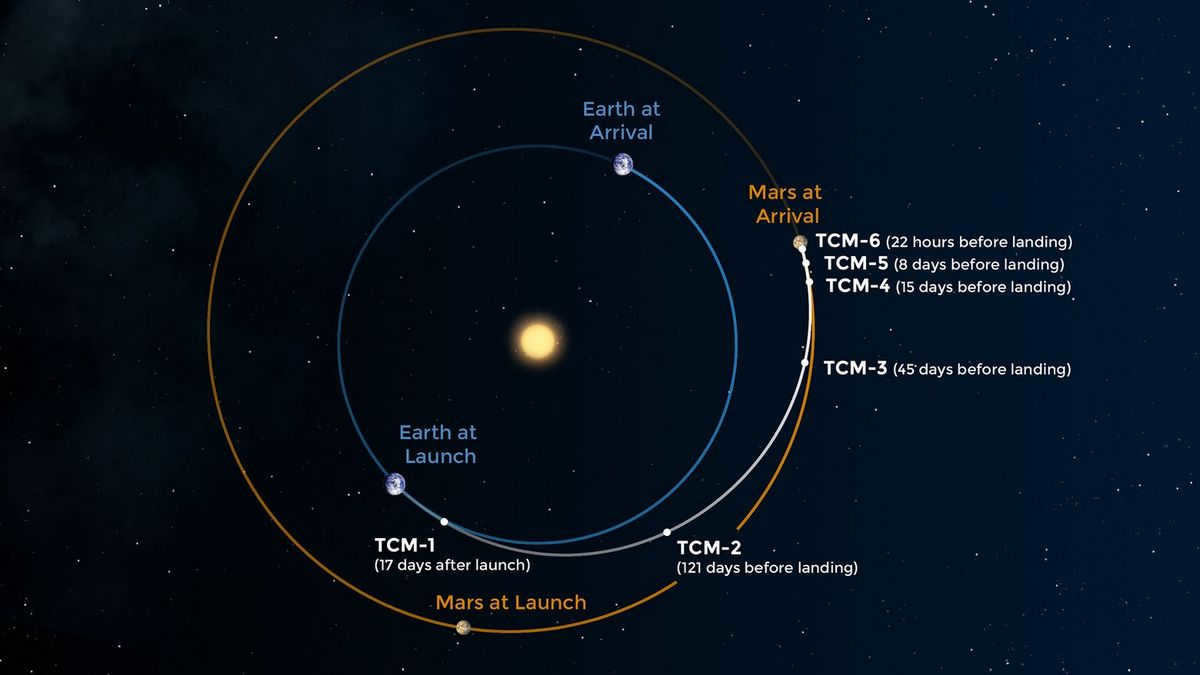
Parabolic Path – Quicker yet more Costly
An alternative that significantly decreases the time spent in the vastness of interplanetary space: the spacecraft and crew are subjected to less cosmic radiation. As a result, the requirements for radiation protection, oxygen, and food supplies are reduced.
By following a parabolic trajectory, the spacecraft must be launched at a third space velocity – 16.65 km/s. The journey from Earth to Mars will take around 70 days. Important details: it is costly. Fuel consumption will increase by 4.3 times compared to the Goman trajectory.
The hyperbolic trajectory is the optimal choice, but still presents challenges
Experts view the hyperbolic trajectory as the most promising option. The concept behind this route involves propelling the spacecraft towards Mars at a velocity exceeding the third cosmic velocity. This approach would considerably decrease the duration of the journey, although it would necessitate the use of more powerful engines. Scientists are placing their bets on innovative electronic (ion) engines.
Take, for instance, the celestial body known as “Oumuamua”, which belongs to the category of hyperbolic asteroids. It managed to traverse the distance between Earth and Mars’ orbits in a mere 14 days.
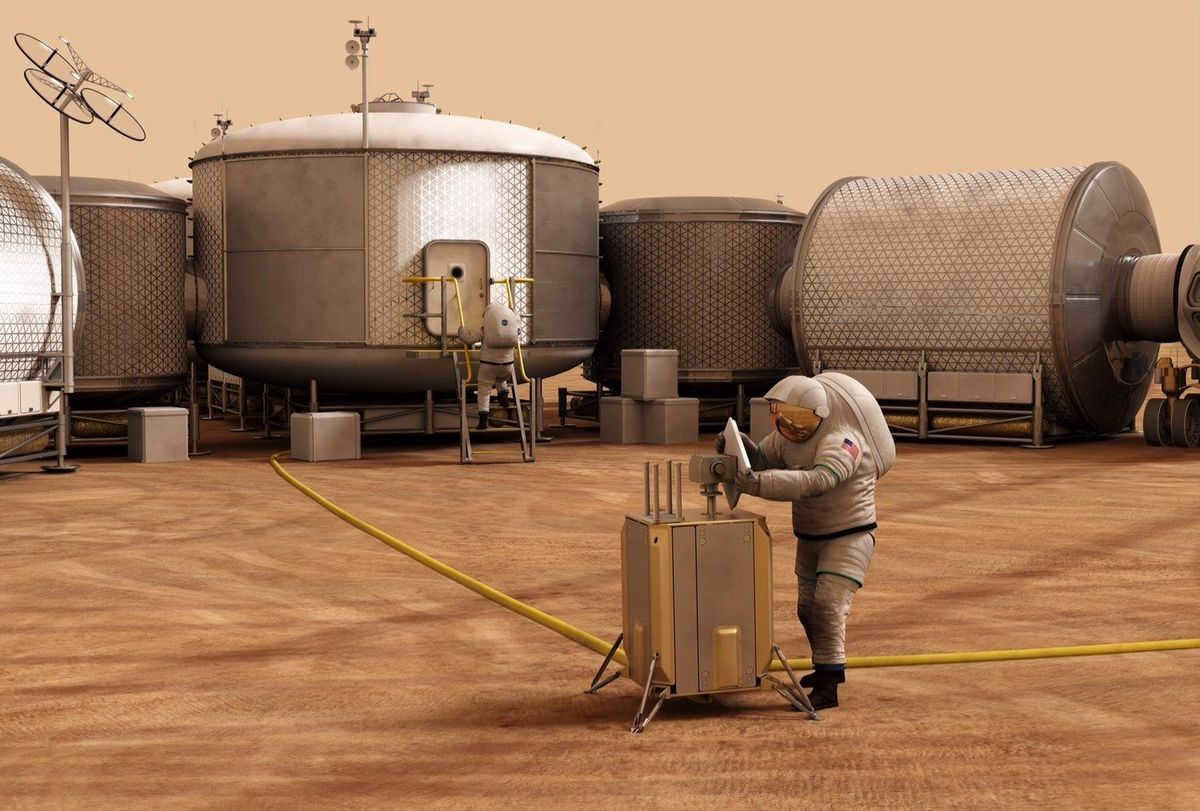
Methods for reducing the duration of the journey
In addition to the methods mentioned above, one approach is to devise the most efficient flight trajectory. Another possibility is to utilize more advanced propulsion systems, such as nuclear, electromagnetic, or antimatter engines.
In 2022, researchers introduced a solution for shortening the travel time to Mars – a device powered by infrared lasers.
Estimating the Cost of the Trip
The estimated cost of the trip can vary greatly. According to studies conducted in the United States, the budget for delivering a ship to Mars along with the crew could range from $220 to $400 billion.
In a 2022 interview, Elon Musk stated that the price of a ticket for his shuttle to the Red Planet would be approximately $100,000. However, just three years prior, he was asking for up to $500,000 for a round trip ticket.
Undoubtedly, scientific investigation is the primary purpose behind selecting this particular planet. It has been determined to be more conducive for potential colonization in the future compared to other celestial bodies within the solar system. There are additional objectives to consider:
- the quest for indications of life;
- the exploration for valuable minerals;
- the examination of the impact of extraterrestrial conditions on human beings;
- the advancement of astronautics.
The primary concern lies in the length of the journey. Experts are unable to anticipate the potential unforeseen circumstances that may arise for both the spacecraft and its crew while in outer space. The possibility of equipment malfunction, meteor showers, solar winds and flares, radiation exposure, claustrophobia, mental and physical health issues, as well as the depletion of essential resources such as food, oxygen, and fuel, cannot be disregarded.
Beginning in the 1960s, the initial missions to Mars were initiated with the launch of the first space probes. Over the course of time, more than 50 devices were dispatched, but a significant portion failed to successfully touch down on the surface of the Red Planet. This can be attributed to various in-flight emergencies, mishaps during launch or landing, loss of communication, and unsuccessful attempts at landing, among other factors.
It all relies on the chosen path. If the journey to Mars opts for chemical propulsion, then thousands of metric tons of fuel will be required. The primary expenditure is for the launch and touchdown of the spacecraft. Additionally, fuel is also necessary for sustaining the life support of the crew.
Earth-Mars Distance
The minimum distance is 56 million kilometers. Modern spacecraft can effortlessly cover that span. However, it’s not all straightforward. Due to the varying trajectories and velocities of the planets, the gap between them can extend to a substantial 401 million kilometers, which is at least 8 times more costly than the initial project estimate.
Summary
Although there are several challenges, the moment of reaching the Red Planet is drawing nearer. According to NASA, this monumental event could occur between 2030 and 2040. Elon Musk, on the other hand, predicts that the SpaceX spacecraft will transport passengers to Mars by 2029.
The 2018 examination featured multiple-choice questions where candidates had to select two correct answers from a pool of five options, as well as tasks involving the extraction of astronomical data from text and tables. Additionally, while studying the astronomy course, students were required to solve various problems. These problems often necessitated the use of a calculator. Here are a few examples:
Example 1
The weight of Mars is only 0.1 times that of Earth, and its size is half the size of Earth. What is the proportion of the orbital periods of the man-made satellites of Mars and Earth, denoted by TM/TE, when they move in circular orbits at low altitudes?
Solution
The acceleration of a satellite traveling at speed v around a planet with mass M on a circular path with a radius is given by
The orbital period of the satellite
Example 2
Mercury moves in an elliptical orbit with a major semi-axis of a = 0.38 a.u. The eccentricity of the orbit e = 0.2. Calculate the gravitational force (or acceleration of Mercury) between the Sun and Mercury at perihelion and aphelion.
1. Locate the necessary information within the tables
Mercury m = 0.3 ˑ 10 24 kg,
mass of the Sun М = 2 ˑ 10 30 kg, 1 a.u. = 1.5 ˑ 10 11 m
2. Calculate the major semi-axis of Mercury’s orbit
а = 0.38 ˑ 1.5 ˑ 10 11 = 5.7 ˑ 10 10 10.
3. Determine the distances between the Sun and Mercury at perihelion (r) and aphelion (R):
r = а (1-е) = 0.38 ˑ 1.5 ˑ 10 11 ˑ(1-0.2) = 4.56 ˑ 10 10
R = а(1+е) = 0.38 ˑ 1.5 ˑ 10 11 ˑ (1+0.2) = 6.84 ˑ 10 10
4. Calculate the forces of interaction F and f
Answer: F = 1.93 x 10^44 ; f = 8.59 x 10^43
Example 3
Read the text:
The distance to a star R, expressed in parsecs, is equal to the inverse of the star’s parallax π, which is expressed in seconds of arc. In other words, R = 1/π. The path that light travels in the span of a year is known as a light-year.
1 parsec = 3.26 light years = 206,265 astronomical units = 3.08 x 10^13 km.
The absolute magnitude M of a star, which it would have if it were 10 parsecs away from us, is referred to as the stellar magnitude.
M = m + 5 + 5lgπ or M = m + 5 – 5lgr,
where m is the observed (apparent) stellar magnitude of a star located at a distance of r parsecs and having an annual parallax π.
1) Calculate the values
The parallax of Sirius is 0.37″ and the parallax of Spica is 0.02″. Find the distances to these stars in parsecs, light years, astronomical units, and kilometers.
Answers: 2.7 parsecs = 8.8 light years = 558000 astronomical units = 8.3 ∙ 10^13 kilometers;
50 parsecs = 163 light years.
Altair’s parallax is 0.20″ and Vega’s parallax is 0.12″. Determine the distances to these stars in parsecs, light years, astronomical units, and kilometers.
Answers: 5 parsecs = 16.3 light years = 1.03 ∙ 10^6 astronomical units = 15.4 ∙ 10^13 kilometers;
8.3 parsecs = 27.2 light years = 1.7 ∙ 10^6 astronomical units = 2.56 ∙ 10^14 kilometers.
2) Perform the calculation
What is the ratio of the true brilliance of Sirius to the true brilliance of its companion? Sirius has an apparent stellar magnitude of -1.58, while its companion has an apparent magnitude of 8.44. Keep in mind that the distance between these stars is negligible compared to the distance from Earth to Sirius.
Answer: The true brilliance of Sirius is 10200 times greater than that of its companion.
Find the absolute stellar magnitude of Sirius, given that its parallax is 0.371″ and its apparent stellar magnitude is -1.58.
The answer is +1.27.
Determine the absolute magnitude of Antares, with a parallax of 0.009″ and an apparent magnitude of +1.22.
Answer: -4.0.
Unique Example 4
Imagine a scenario where Mars suddenly came to a halt in its orbit. Have you ever wondered how long it would take for Mars to eventually fall into the Sun? According to scientific calculations, the average distance from the Sun to Mars is approximately 1.52 astronomical units.
Solution
If we were to consider the possibility of Mars falling into the Sun, we can interpret it as a form of orbital motion with a major semi-axis of 1.52 astronomical units.
Therefore, the time it would take for Mars to fall into the Sun would be equivalent to a quarter of its orbital period.
If you’ve ever pondered over the duration it would take for a person to embark on a voyage from Earth to Mars and back, the vast distances involved and the potential challenges that would arise, prepare yourself for an enlightening journey as we delve into all the intriguing details.
The planet Mars has been a source of fascination for the brightest intellects of humanity for many decades, and even centuries. It has sparked scientific curiosity, raised questions about potential colonization, and offered a new frontier in our exploration of the solar system.
Discover the duration and distance of a journey from Earth to Mars, both in terms of time and kilometers. Find out the exact distance between the two planets, why it fluctuates, and the optimal time to launch a spacecraft towards this celestial body.
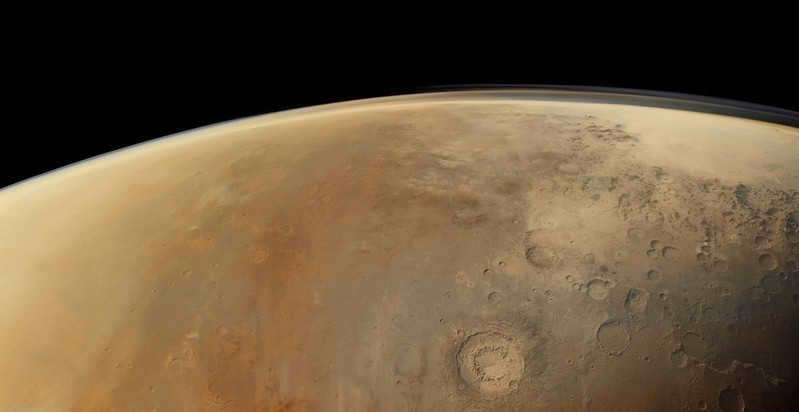
How far is the distance to travel from Earth to Mars
Prior to purchasing a ticket to Mars, it is important to note that even though it is a neighboring planet of Earth, being the 4th planet from the Sun, it requires traveling tens or hundreds of millions of kilometers, depending on the season in which your space journey is planned, the number of years you are willing to wait, and the trajectory you choose. Now, let’s discuss this question in more detail and with greater seriousness.
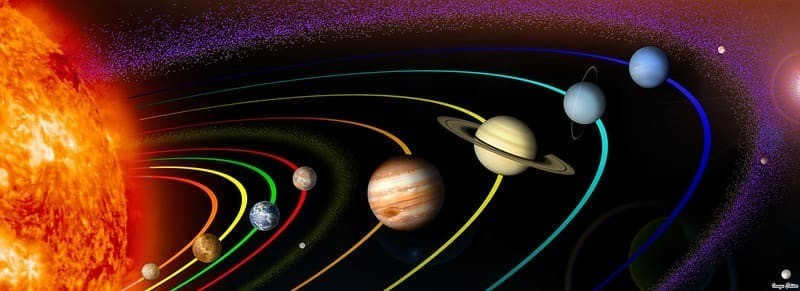
Mars orbit and distance variation at different positions
When discussing the theoretical time it would take to travel to Mars on a spacecraft, it is crucial to consider its orbit. Similar to Earth, Mars has an elliptical orbit and is situated roughly in the same plane, but there are variations.
The distance between Earth and Mars is not fixed – it varies as we move closer and further apart.
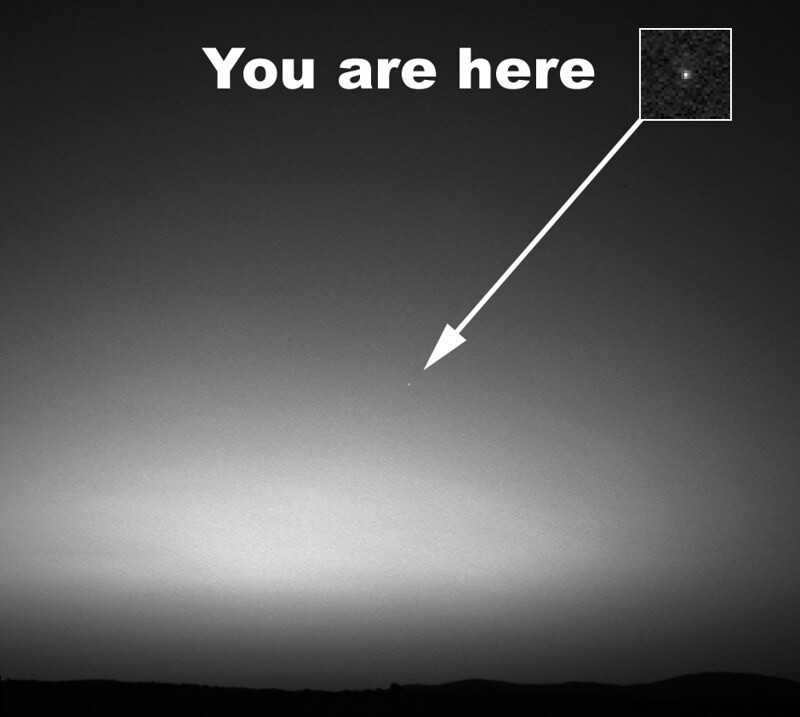
What is the expected position of Mars at the time of spacecraft launch
It may come as a surprise, but the ideal time to initiate a spacecraft launch and manned missions to Mars is not when the distance between the two planets is at its minimum. Flying in a straight line from Earth to Mars is not feasible due to the gravitational forces exerted by both Earth and the Sun. Additionally, the energy required for such a journey would be immense, considering the constant movement of both planets. If we were to simply set off and fly, we would constantly have to chase after Mars. This level of technology is currently beyond the capabilities of mankind.
As a result, flights to Mars are always planned within a specific launch window, which represents the optimal period for launch. The objective is for the spacecraft to reach Mars when the planet is at the same point in its orbit. Alternatively, the spacecraft could arrive slightly ahead of Mars and allow the planet to “catch up”. The ideal alignment of Earth and Mars for this type of journey occurs every 2 years and 2 months, when Earth overtakes Mars in cosmic velocity.
The distance between Mars and Earth is constantly changing due to the ellipticity of their orbits, the varying distances of the planets from the Sun, and their different speeds. Even during the “opposition” period, the distance can range from 55.76 to 101.39 million kilometers, depending on the year.
It is challenging to determine the exact number of kilometers a person would need to travel from Earth to Mars. This is because orbital mechanics come into play. The actual distance to the Red Planet is much greater than the minimum distance between the two planets. The majority of the journey is completed through inertia, as the spacecraft is influenced by the gravitational pull of celestial bodies. In fact, it covers about half of the heliocentric orbit between Mars and Earth around the Sun.
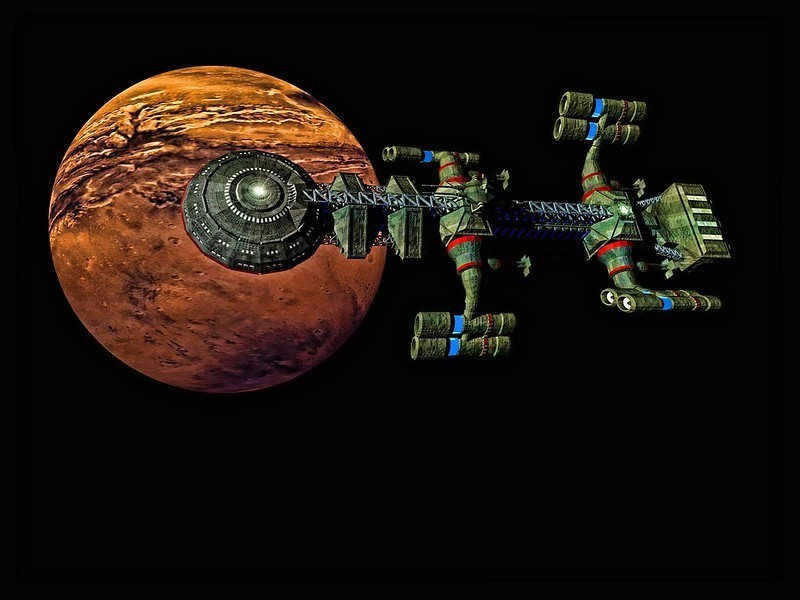
Approximately 3.14 astronomical units (a.u.) is the distance covered by the Earth during half of its orbit, while Mars is located at around 4.77 a.u. To determine the ship’s orbit, the average between the two planets is taken, resulting in a length of 3.94 a.u. One astronomical unit is equivalent to 149,597,868 kilometers, so rounding up, the distance from Earth to Mars is approximately 600 million kilometers. However, it should be noted that these calculations are simplified, as more complex algorithms are used in reality.
How much time does it take to transport a person to Mars in Earth years, days, and hours?
The duration of a journey to Mars is contingent on various factors, such as the velocity of the spacecraft, the trajectory it will pursue, the planetary positions, the mass of the vessel and its cargo, and the quantity of fuel. In theory, if we solely account for speed and path, we can approximately estimate the time required for a trip from Earth to Mars:
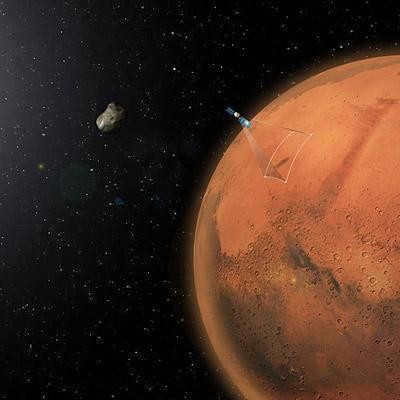

- In order to enter Earth’s orbit, a rocket must achieve a velocity of 7.9 km/s – equivalent to 29,000 km/h – in order to overcome the force of gravity.
- When traveling between planets, a spacecraft needs to reach a velocity of 11.2 km/s – equivalent to 40,000 km/h.
- The average velocity for interplanetary travel is 20 km/s.
- When a spacecraft is in a heliocentric orbit, its velocity is combined with the Earth’s velocity, which is approximately 30 km/s. For instance, the New Horizons spacecraft was launched from Earth with a velocity of 16.26 km/s, resulting in a total heliocentric velocity of about 40 km/s (or roughly 59,000 km/h).
When considering these calculations, the flight time from Earth to Mars on the shortest possible trajectory would be 941 hours or 39 Earth days. If the route aligns with the average distance between our planets, the journey would take approximately 3,879 hours or 162 days, which is a more realistic estimation. However, if Mars is at its farthest distance from Earth, the trip would last 289 days.
The most advantageous approach would be to conduct an orbital launch, gradually bringing the spacecraft closer to Mars. Utilizing the gravitational pull of the Sun (known as the slingshot effect), the ship gains the necessary momentum to cover the distance. At the appropriate moment, the spacecraft is released from the Sun’s gravitational field and enters Mars’ orbit. Overall, the one-way journey would range from 150 to 300 days (approximately 5 to 10 months).
What is the complexity of the calculations
While the theory may seem straightforward, there are numerous factors to consider in the practical calculations:
- The elliptical shape of both orbits and the disparity between them;
- The varying speeds of the two planets (with Mars being slower);
- The fact that the Sun does not serve as the central point of the orbits;
- The velocity, weight, and other characteristics of the spacecraft;
- The necessity of ensuring astronauts’ timely return to Earth;
- The optimal trajectory for interplanetary passenger transportation.
Therefore, the calculations must encompass considerations such as fuel quantity, fuel tank size, food supplies, oxygen, and much more.
Forecasts for the amount of air travel over time
Despite the fact that no human has ever set foot on Mars, there have been numerous missions to this planet. Some of these missions, such as Mariner-7 and Mars Polar Lander, managed to reach the surface of Mars in a time frame of 128-335 days. However, these missions faced the challenge of high radiation exposure for the crew. Most manned missions to Mars are currently being planned on hyperbolic trajectories, which would allow for a travel time of approximately six months to reach the Red Planet while keeping radiation exposure within safe limits. The downside of this trajectory is that it requires 4.5 times more fuel for additional acceleration from Earth’s orbit. According to the calculations made by scientists working on the Mars One mission, the journey to Mars would last around 210 days or 7-8 months. In the future, Elon Musk promises to significantly reduce the travel time to 80 days, and eventually to just 30 days. However, NASA specialists are less optimistic in their estimations, suggesting a one-way trip of 6 months and a 6-month return trip. Additionally, once on Mars, travelers would have to wait for 18-20 months for Earth and Mars to align at a suitable distance for the return trip.
To summarize, scientists estimate that a round trip to Mars in a manned vehicle would take approximately 450 Earth days (10,800 hours or 1.2 years).
Here’s an interesting fact: if interplanetary travel was possible on airplanes with an average speed of about 1,000 km/h, it would take passengers 22,731 days and 16 hours (or 545,560 hours, which is nearly 63 years) to reach Mars. This is assuming that Mars is in opposition and the airplane is flying in a straight line. If the airplane followed an elliptical path, the journey would take 560 years.
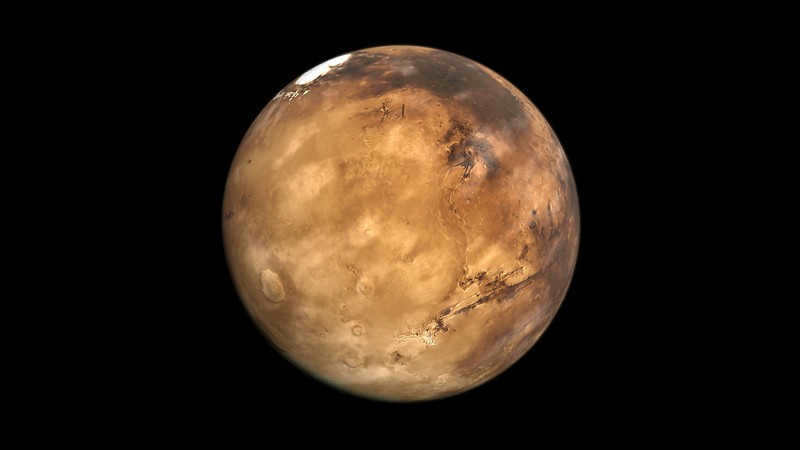
Why does it take so much time to travel by air?
If there are no breakdowns or unforeseen circumstances, the journey would last approximately 2.5 years (with six months for flights and 18-20 months waiting on Mars for the next approach to our planet).
The jet engines utilized for launching spacecraft consume the majority of their fuel to overcome the gravitational force of Earth, leaving the spacecraft to primarily rely on inertia for the remainder of the journey. The current design of spacecraft does not yet allow for additional fuel reserves, preventing them from reaching higher speeds.
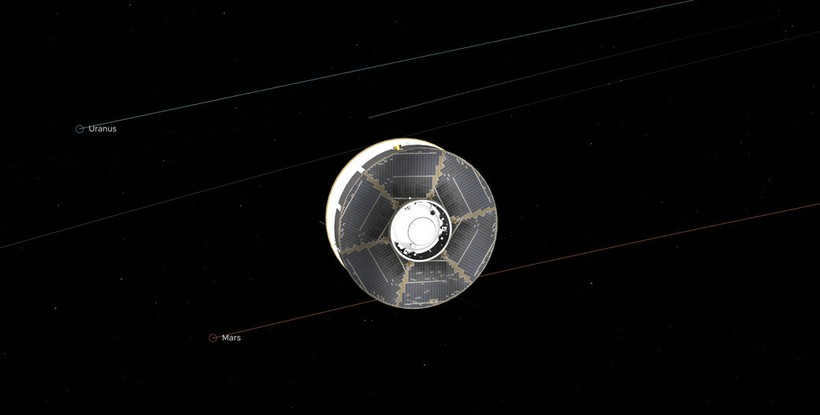
Strategies for Expedited Travel to Mars
Thus far, the only means available to humankind for interplanetary voyages are chemical rocket engines, which possess exceedingly high fuel consumption rates. Even if a spacecraft were to travel at a minimum velocity of approximately 12 km/s (about 40,000 km/h), a significant amount of fuel would be required. Furthermore, the more massive the spacecraft, the greater the quantity of fuel necessary to propel it into space and decelerate it near Mars. Fuel is also essential for operating life support systems.
The relationship here is straightforward: either more fuel or lengthier travel duration. The trajectory to Mars can be elliptical, parabolic, or hyperbolic. Let’s examine the distinctive characteristics of each of these routes.
Optimal Path to Mars: The Elliptical (Goman) Trajectory for Fuel Efficiency
This is Walter Goman’s proposed method, which is the simplest and most fuel-efficient way. However, it is also the longest, taking approximately 260 days to reach its destination. The spacecraft is accelerated to a speed of 11.59 km/s and follows an elliptical path that intersects the orbits of both Earth and Mars. It aligns with the craft when it reaches the same point on its orbit. As it approaches Mars, the spacecraft accelerates once again to enter its orbit. The trajectory of the ship forms a large arc, significantly increasing the overall distance traveled.
Many Mars rovers are also launched along an elliptical trajectory.
Interestingly, if the speed of the spacecraft is increased to 12 km/s, the flight time can be reduced to 150 days by shortening the length of the arc. However, there are challenges associated with decreasing the speed.
Parabolic trajectory – a faster but more expensive option
The parabolic trajectory offers a quicker route to Mars, taking only 70-80 days. This would result in significant savings in provisions, life support systems, and radiation protection. However, it requires the spacecraft to be accelerated to one-third of the speed of light by the third day. As a result, a substantial amount of fuel will be needed for both the launch and deceleration, approximately four times more than what would be required for a flight along the Goman trajectory. Despite the increased cost, a round trip via a parabolic trajectory would take only 5 months.
This route offers a faster way to complete the journey to Mars compared to the elliptical route (less than 80 days one way, up to half a year for a round trip), but it requires significantly more energy (4.5 times more). Instead of following a parabolic route, the spacecraft will move along a hyperbolic trajectory, allowing it to reach escape velocity from the Solar System, surpassing the third cosmic velocity. Additionally, the range of the trajectory is wider than that of a parabolic route.
The main challenge lies in accelerating the spacecraft to the required speed (more than 16.7 km/s), which can only be achieved with ion engines that are currently still being developed.
Many manned flights to Mars are planned along this trajectory. For instance, the New Horizons spacecraft completed the journey to the Red Planet in 78 days. Furthermore, the interstellar object Oumuamua has the capability to travel from Earth to the Martian orbit in just 2 weeks.
Methods to Reduce the Duration of a Flight
In order to expedite human travel to Mars, there are a few potential options:
One possibility is the utilization of high-capacity nuclear engines, which could potentially cut the duration of interplanetary flights in half (to roughly 7 months, and possibly even less than 40 days, according to some researchers). This would provide a wider range of optimal departure times from both Earth and Mars. The only drawback is that such an engine has not yet been developed; it is still in the works.
Another option is to employ electric (ion) engines in conjunction with nuclear power plants, enabling a journey to Mars in as little as 5 months, and potentially as quick as 40 days in the future. These engines can propel spacecrafts to speeds of 10 km/s and beyond, while maintaining low fuel consumption. For instance, the Dawn probe only required half a ton of xenon for a 10-year mission.
Lastly, there is the possibility of using antimatter. To reach the landing site on Mars, a spacecraft would require 10 mg of antimatter, as well as a budget of 250 million dollars. According to researchers, this technology could reduce the flight time to Mars to just 45 days. In the distant future, antimatter could potentially allow for a journey to the red planet in a mere 3-4 minutes. Theoretically, of course.
Estimating the Cost of the Trip
Considering all of the aforementioned factors, it becomes evident why the response to the inquiry of whether individuals have already visited Mars remains negative for now.
What is the price tag for a voyage to Mars? It amounts to billions. During the era of George Bush Sr., the estimated cost ranged from 80 to 100 billion dollars. Later on, the figures decreased to 20-40 billion. Currently, Ilon Musk asserts that a flight to Mars will ultimately cost 500 million dollars, with the potential to further reduce expenses to 100 thousand dollars. Interestingly, Musk pledges to provide a complimentary return ticket to Mars.

Purposes of Mars Expeditions
While Venus may be closer to Earth, Mars offers more favorable conditions for potential travelers. Despite its minimal amount, the Red Planet possesses oxygen in its atmosphere and experiences temperatures comparable to polar climates on our planet.
Therefore, what are the objectives of manned missions to this celestial body:
- Conducting scientific research and advancing technology;
- Exploring and potentially colonizing Mars, as well as promoting interplanetary tourism;
- Seeking resources beyond the confines of Earth.
Challenges yet to be resolved in space travel
The extended duration of a mission to Mars presents inevitable obstacles that cannot be overlooked. Potential malfunctions and technical glitches, along with meteor streams and solar wind, pose a constant threat. There is a real possibility that humans may find themselves stranded in a non-functional spacecraft with no hope of rescue.
Furthermore, the mental and physical strain endured during the journey is immense. Excessive radiation levels, cramped quarters, and the risk of radiation sickness are just a few examples of the hardships faced. These conditions can result in various mental and physical ailments, such as muscle deterioration, circulatory issues, and even depression. The recovery process can take up to two years.
Additionally, the task of adequately stocking fuel, oxygen, water, and food for the entire duration of the trip and the return journey is no easy feat.
Unsuccessful Missions
There are numerous factors that can lead to unsuccessful space flights. Take into consideration that over half of the 48 missions to Mars launched between the 1960s and 2020 were not successful. These missions have been plagued by a variety of problems such as loss of communication, hardware malfunctions, and launch accidents. These failures have affected space agencies from the USSR, the US, Japan, and China. As a result, sending a human to Mars has not yet been achieved due to the numerous challenges that need to be anticipated, predicted, and accounted for, as well as the limitations of current technological capabilities.
How much fuel is required for a trip to Mars?
A significant amount of fuel is necessary – tens of tons, and to accommodate its reserves, the spacecraft will need to construct a massive storage system. An intriguing solution has been devised by Robert Zubin: utilizing a nuclear reactor and carrying only 6 tons of hydrogen from Earth, while extracting carbon dioxide from the Martian atmosphere. These components will then be used to produce methane and water. The water will be utilized to generate oxygen and hydrogen, with the hydrogen being employed to create methane. This process will yield approximately 100 tons of fuel, which will be sufficient for the return journey.
At aphelion (the farthest distance), Mars is located approximately 249 million kilometers away from our star, while at perihelion (the closest approach) it is about 206 million kilometers away. The average distance from the Sun to Mars is approximately 228 million kilometers. In comparison, our planet is situated at a distance of 150 million kilometers (1 astronomical unit) from the Sun, whereas Mars can be found between 1.38 and 1.66 astronomical units depending on its position in orbit. If you are curious about how long it takes for light to travel to Mars, on average it takes about 12 minutes and 40 seconds. Just to remind you, it takes around 8 minutes and 19 seconds for light to reach Earth. And if you are wondering about the distance between the Moon and Mars, it is approximately 55.7 million kilometers at maximum approach and around 400 million kilometers at maximum distance, which is almost the same as the distance from Earth.
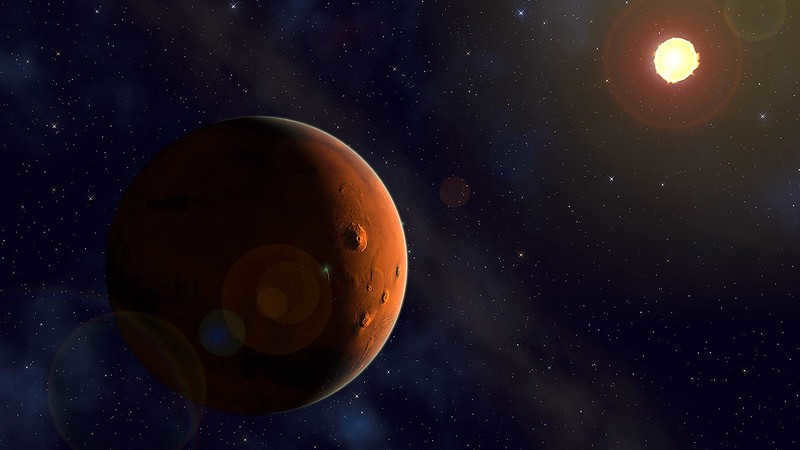
Summary
Based on the statements made by space organizations around the world, it is expected that human travel to Mars will occur in the near future, specifically between the years 2020 and 2040. However, before these ambitious plans can be realized, numerous technical challenges must be overcome in order to ensure the safety of the crew and make the first manned mission to Mars a reality.
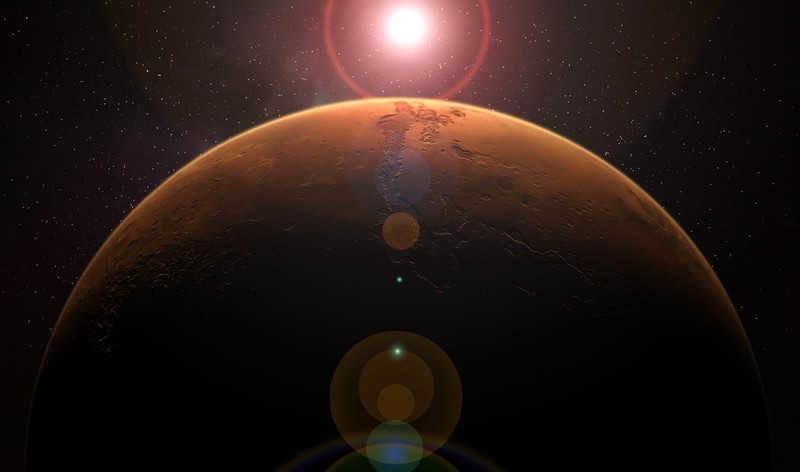
What are your thoughts on the expedition to the Crimson Planet? Let us know in the comment section.

Only a small number of individuals viewed these clips, with less than 2000 views. It may be beneficial to condense the content into summaries for those who wish to save time, although the videos themselves certainly add a level of excitement and enjoyment.
The headings of the subheadings align with the titles of the videos.
There is a strong belief that we are exceptionally isolated in the vast expanse of the universe. This matter has already been thoroughly discussed in “TrV-Science”, with the participation of highly esteemed individuals. The estimations varied, but a consensus was reached: the emergence of advanced life on Earth occurred due to a series of highly improbable events. It is probable that life, particularly beyond the level of anaerobic bacteria, is an exceedingly rare occurrence. If the Galaxy were brimming with life, the notion of interstellar travel would be rendered pointless. However, it is likely that we will gradually uncover planets that are capable of sustaining life but are devoid of it from their inception.
If this is, in fact, true, then the existence of life on Earth is one-of-a-kind and cannot be replaced. This realization should motivate humanity to strive for the ultimate objective of spreading this extraordinary phenomenon, initiating a series of consecutive planetary colonizations, and thereby creating an opportunity for life to flourish throughout the cosmos for countless eons. In order to achieve this monumental task, it is crucial to determine the feasibility of interstellar travel and ascertain whether it is possible to traverse the vast expanse of multiple light years, carrying life safely across the unfathomable abyss of space. The question that remains is: how many light years must be traversed in order to accomplish this extraordinary feat?
2. Best Destinations
Regrettably, the closest exoplanet, Proxima Centauri b, is most likely not habitable, just like the planets in the Trappist-1 system and other nearby red dwarf planets. This is not solely due to them being tidally locked (always facing one side of the star) or having light-days equal to two orbital periods of the planet. The primary issue is the intense magnetic activity of red dwarfs. Proxima Centauri b is bombarded with X-rays and solar wind hundreds of times stronger than those experienced on Earth. The most severe consequence is atmospheric erosion, similar to what happened to Mars. The only defense mechanism would be a robust magnetic field, which is unlikely to exist on a slowly rotating planet.
There is a limited number of classes that are suitable for habitable planets – only G and the brighter half of the class K (orange dwarfs). Nevertheless, these stars account for more than 10% of the total. Out of the thousands of planets in Kepler’s collection, only a small number exist within their habitable zone, all located approximately a thousand light-years away from our position.
3. How to travel
– Avoid using antimatter as a means of propulsion (production efficiency is approximately 10^-9 and difficult to improve beyond 10^-7).
– Avoid relying on gravity manipulation techniques such as the warp engine or wormholes, as they require large amounts of exotic matter with negative energy density.
– Do not expect new and unknown physical laws to provide a solution. While new physics will inevitably emerge, it is unlikely to revolutionize transportation or our understanding of scales. It is unwise to rely solely on future discoveries and neglect current efforts.
– Do not depend on a star sail propelled by super-powered lasers.
– It is improbable that starships will be able to travel through space using uncontrolled thermonuclear fusion (explosion). In addition to its significant minimum mass requirement, this method suffers from very low efficiency due to the isotropic dispersion of the explosion products. Only one quarter of the momentum from the flying explosion products can be intercepted.
– There exists a faint glimmer of hope for controlled thermonuclear fusion, but not in the deuterium-tritium form. Instead, it lies in the deuterium-helium-3 reaction. In this reaction, a proton is expelled instead of a neutron, and all decay products can be directed in a single direction. Unfortunately, the necessary combination of density, temperature, and retention time for this reaction is two orders of magnitude greater than that required for the deuterium-tritium reaction. Therefore, the prospects for success are minimal.
– The Fly will need to utilize uranium (235 U) as its primary fuel source. This choice is not necessarily due to its high efficiency (with an energy yield of 0.001 mc 2 compared to 0.004 mc 2 for thermonuclear fuel), but rather because it is the most feasible option available. Although there will still be numerous challenges to overcome, it appears that none of them are insurmountable.
4. Energy and Time
The formula for calculating the optimal velocity of the working substance is V = c√KPD, where E represents the released energy, assuming that the substance that released this energy was propelled into the jet. With an efficiency of 0.25, we obtain a speed of 7000 km/s. It is likely that the efficiency factor will be even lower, as it takes into account the incomplete combustion of uranium, energy conversion losses, and engine losses. It may seem that by using fuel that is 10 times the weight of the ship, we can achieve a speed of up to 5% of the speed of light and send a probe to Alpha Centauri, which will reach its destination within a human lifetime – 80 years.
If the duration of the flight is significantly longer than the average human lifespan, then there seems to be no need to rush. With moderate flight parameters, it is estimated that it would take approximately 3000 years to travel 30 light years with the inclusion of braking. This would require a payload of around 100 tons, a power output of approximately 150 MW, a radiator area of 30 hectares, and engine thrust of just a few kilograms, with the reactor and engines operating continuously. While not the most comfortable conditions, it does not appear to be a hopeless endeavor.
However, such a lengthy journey imposes limitations on the type of passengers that can be accommodated on the spacecraft. Active living organisms would not be suitable, so only seeds, spores, and frozen embryos consisting of a few cells would be viable options.
5. Design and defense
There is no need to squeeze the reactor, radiators, and engine into one hull. Instead, the design will resemble a long caravan on a string: the engine will be positioned in the front, followed by the power unit and separate radiators a kilometer away, and finally, the payload will be located dozens of kilometers behind. Perhaps there will be other components as well. The weight of the “string” is not a problem as long as the entire system experiences negligible acceleration, and this design eliminates the issue of reactor radiation. However, the problem of cosmic rays remains.
Over the course of 3000 years of space travel, cosmic rays will eliminate all forms of life on the spacecraft, except for a few particularly resilient spores. To ensure protection, magnetic shielding is necessary, as passive shielding made of physical matter is either ineffective or excessively heavy. By enclosing the payload within a superconducting solenoid with a magnetic field strength of 10 Tesla and a radius of 12 meters, the flux of cosmic rays with energies up to approximately 20 GeV can be significantly reduced (a superconductor at around 30 K is required, as the equilibrium temperature in outer space is approximately 20 K). By analyzing the spectrum of cosmic rays above 20 GeV, integrating the data, and calculating the radiation intensity, it is determined that the level is approximately 0.1 µSv/h – a value lower than the natural background radiation on Earth. However, over the course of the 3000-year space journey, a notable dose of radiation, amounting to 1.6 Sv, would still accumulate. This poses no issue for plant seeds and simple organisms, as seeds have been known to sprout and nematodes have been observed to come back to life after many thousands of years in permafrost, where they have accumulated doses much higher than 1.6 Sv. However, the effects on mammalian embryos remain unknown.
Is it possible to increase the size of the solenoid in order to decrease the background? Another issue to consider is the tensile strength of the material. The magnetic field will exert a force that could potentially pull the solenoid apart. With a radius (R) of 12 meters and a magnetic field strength (H) of 12 Tesla, the force would be approximately 6 tons per linear centimeter of winding or 10,000 tons for the entire length. It would require an immense amount of the strongest material to withstand that force. However, it is still lighter than passive protection.
Interestingly, the power of the defense is limited and flying too slowly is not feasible. Nevertheless, there is a range of flight parameters where it is possible, albeit close to the limit. This range narrows down as the distance to the nearest habitable planets increases, let’s say, to a hundred light years.
6. Things to do on the planet
The ideal objective is to find a planet that has liquid water on its surface and a nitrogen atmosphere with a small amount of carbon dioxide. However, this planet will not have oxygen, so we will need to make some changes to make it habitable (I prefer not to use the word “terraforming”). Bacteria can help with the necessary modifications, followed by the introduction of plants. However, there is another challenge – unoxidized iron. On Earth, this has been a problem for bacteria for over a billion years. Fortunately, thanks to evolution, we now have more efficient organisms and we can also use genetically modified organisms (GMOs) that are even more effective at producing oxygen. This means we won’t have to wait a billion years, but it will still take thousands of years.
Thus, it is necessary to either dispatch highly advanced life forms through a subsequent spacecraft after a span of thousands of years (provided that the original senders have faith in their distant descendants), or patiently wait for their turn for thousands of years while being preserved in liquid nitrogen (if the distant descendants are not trusted, as this option is more reliable).
The “activation” of the initial batch of primitive organisms poses no complications, but the cultivation of more sophisticated creatures necessitates the utilization of artificial intelligence that surpasses the current capabilities. Nevertheless, this represents an area where the journey of evolution is still ongoing.

